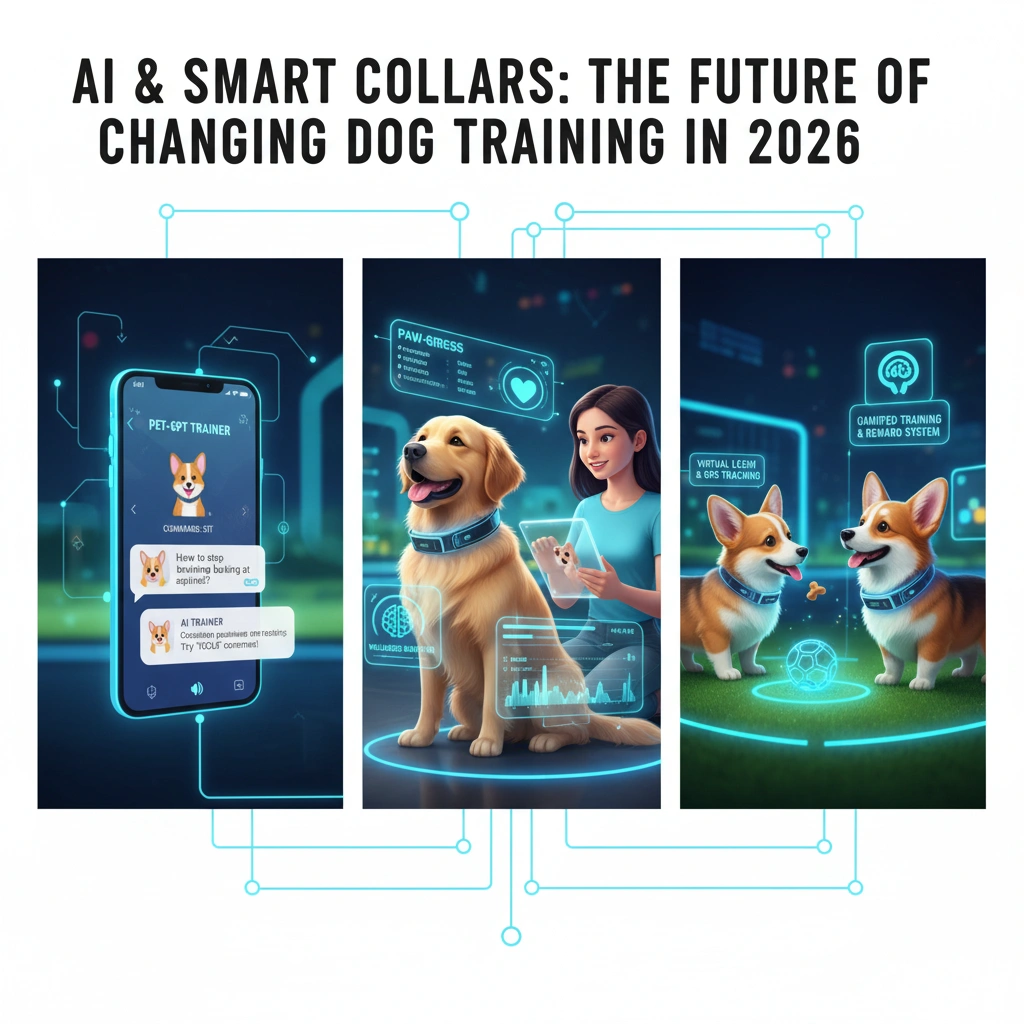Dog training has come a long way from the days of traditional obedience classes and clicker training. In 2026, technology is reshaping how pet owners understand and interact with their furry companions. Artificial intelligence (AI) and smart collars are revolutionizing dog training, making it more personalized, efficient, and humane. These innovations allow owners to decode behavior, track health, and reinforce positive habits in ways previously thought impossible.
Understanding Smart Collars
Smart collars are wearable devices equipped with sensors, GPS, and connectivity features. Unlike conventional collars, they do more than just hold ID tags. Modern smart collars track a dog’s activity levels, monitor vitals like heart rate and temperature, and even detect emotional states such as stress or excitement.
When combined with AI, these devices analyze patterns in behavior, helping owners and trainers understand their dogs’ needs. For example, a sudden increase in restlessness or barking might indicate anxiety, prompting timely intervention. Smart collars bridge the gap between observation and understanding, providing data-driven insights that were once available only to veterinary specialists.
AI-Driven Personalized Training
AI-powered training platforms leverage machine learning algorithms to create personalized training programs for dogs. These platforms analyze breed, age, temperament, and historical behavior to recommend exercises, feeding schedules, and training routines tailored to each dog.
Traditional training methods often rely on one-size-fits-all techniques. AI, on the other hand, adapts in real-time. If a dog responds well to a certain reward or method, the AI system reinforces that approach. If a behavior is persistent or problematic, the system suggests alternative techniques or alerts the owner to consult a professional trainer.
Real-Time Behavior Analysis
One of the most significant advantages of AI and smart collars is real-time behavior analysis. Sensors detect barking, pacing, aggression, or anxiety, and AI interprets these signals to provide actionable insights.
For example, a smart collar may detect excessive scratching and correlate it with a high-stress environment or potential skin irritation. Trainers and owners receive notifications on their smartphones, allowing them to address the issue immediately. This proactive approach improves the dog’s well-being and accelerates training progress.
Remote Training and Virtual Coaching
AI-enabled smart collars have unlocked remote training possibilities. Owners can connect with certified trainers through apps that integrate data from the collar. Trainers receive detailed reports on a dog’s activity, responses to commands, and emotional state, allowing them to provide precise guidance without being physically present.
Virtual coaching platforms also include gamified training modules. Dogs respond to positive reinforcement via smart collars, and owners receive real-time feedback on the effectiveness of their commands. This blend of AI and technology ensures that training is consistent, even when schedules or geography limit in-person sessions.
Health Monitoring and Safety Integration
Modern smart collars double as health monitors, contributing to safer and more effective training. By tracking heart rate, body temperature, and sleep patterns, the collar ensures that dogs are not overexerted during exercises. Owners can identify early signs of stress or fatigue, preventing injuries and promoting humane training practices.
Additionally, GPS-enabled collars improve safety during outdoor training. If a dog strays beyond designated boundaries, owners receive instant alerts. This feature is especially useful for training in open spaces or for dogs with high energy levels who require structured supervision.
Positive Reinforcement Goes High-Tech
AI and smart collars amplify the principle of positive reinforcement, which is the foundation of modern dog training. Smart collars can deliver gentle vibrations, sounds, or treat dispensers when a dog performs a desired behavior. AI ensures that these rewards are timed precisely, enhancing learning and reducing the likelihood of confusion.
Some systems even integrate with voice assistants, allowing owners to issue commands or praise from a distance. This technology ensures that dogs associate commands with consistent responses, reinforcing good habits faster than traditional methods.
Addressing Behavioral Issues
Behavioral challenges such as separation anxiety, excessive barking, or aggression can be difficult to manage. AI and smart collars help owners understand the root causes by analyzing patterns over time.
For example, if a dog shows anxiety during specific hours or in certain locations, the system logs triggers and suggests interventions such as structured training, environmental enrichment, or professional consultation. This data-driven approach reduces guesswork and enables owners to address issues more effectively.
The Future of Dog Training
As AI and smart collars continue to evolve, the future of dog training will be more humane, personalized, and accessible. Integration with augmented reality (AR) training apps, advanced emotion detection, and AI-driven veterinary advice will further enhance how humans interact with dogs.
By 2026, training may no longer be limited to formal sessions. AI-powered systems will allow dogs to learn continuously through play, exercise, and everyday interactions, creating an environment where training is seamless, enjoyable, and aligned with the dog’s natural behaviors.
Conclusion
AI and smart collars are redefining dog training in 2026, offering pet owners unprecedented insight into their dogs’ behavior, health, and emotional states. These tools make training more personalized, consistent, and humane while enabling remote guidance and real-time monitoring. As technology continues to advance, the bond between dogs and their owners will grow stronger, grounded in understanding, care, and data-driven insights.
The era of guessing what your dog needs is ending. In its place comes a smarter, more empathetic approach—where AI and smart collars work hand-in-paw to ensure that training is effective, safe, and enjoyable for both pets and their owners.



